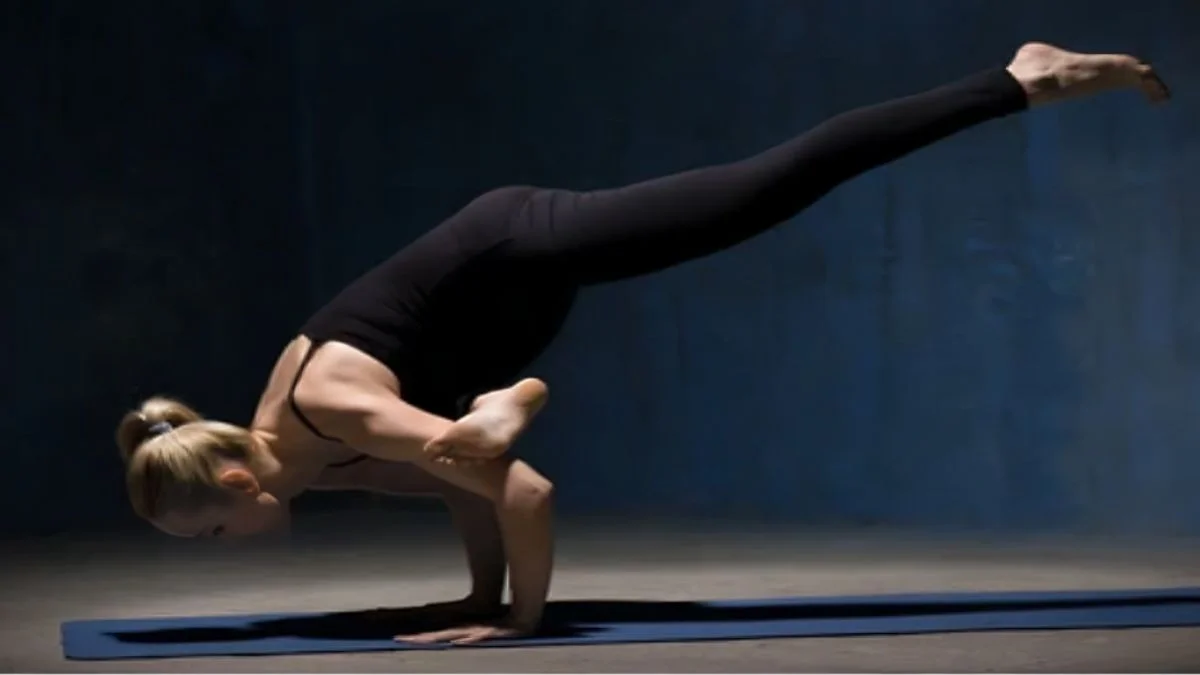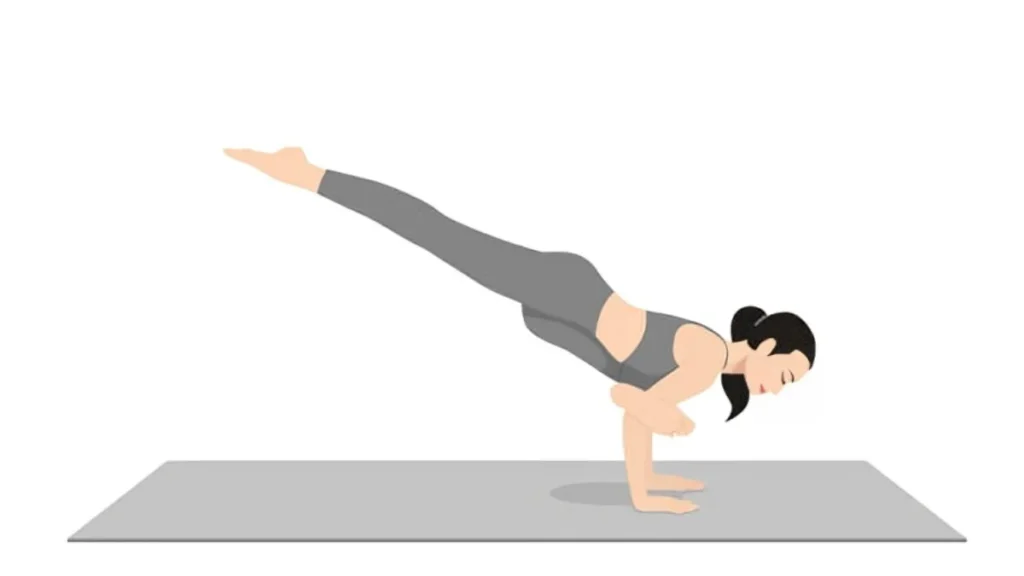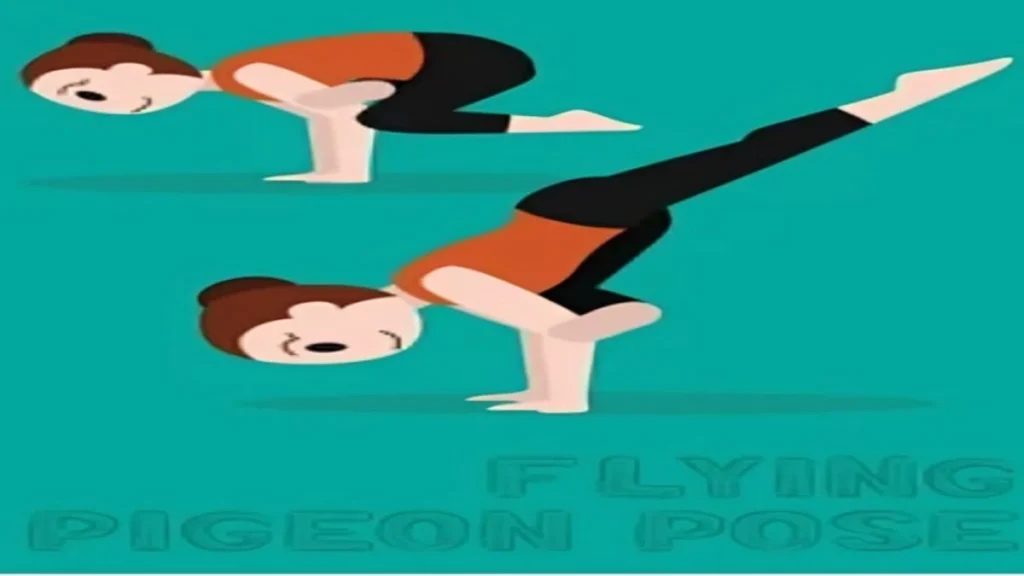YOGA
Flying Pigeon Pose: Benefits, Tips, and How to Perfect It

Eka Pada Galavasana also referred to as Flying Pigeon Pose, is an advanced yoga posture that blends balance, strength, and focus. This position is a true test of the body and mind, requiring a harmonious balance of mental toughness and physical stability. It takes strength to become a Flying Pigeon, but it also takes concentration and balance. The relationship between mental clarity and physical strength is critical; when you ascend into this posture, both need to cooperate to provide a firm base.
Table of Contents
Being Aware of the Principles of Flying Pigeon Pose
Alignment of the body
Achieving equilibrium in Flying Pigeon requires precise alignment. To properly support your weight, your elbows should point backwards, and your wrists should be just beneath your shoulders. A strong base can be established by extending your spine and using your shoulder blades.
Distribution of Weights
Finding the balance between the weight in front of and behind your elbows is essential to achieving Flying Pigeon. Leaning forward and evenly dispersing your weight is necessary. Lifting the extended leg and preserving stability requires this balance.
Advantages of the Flying Pigeon Pose
There are several advantages of including Flying Pigeon Pose in your practice:
Increasing Physical Strength: This posture is great for strengthening the arms and core, which is important for well-rounded practice.
Enhancing Flexibility: It encourages the hips and legs to be more flexible, which is important for a lot of other yoga poses.
Developing Focus: Mastering Flying Pigeon strengthens your mental fortitude, which will improve your ability to focus both during and after your yoga practice.
Encouraging Balance: The pose improves coordination, making it easier to go from one posture to another.

Typical Difficulties with Pigeon Pose
Struggles with Balance
A lot of practitioners have trouble staying balanced. Incorrect weight distribution or a lack of core activation may be the cause of this. Gaining an understanding of the principles underlying balance will enable you to properly tackle these obstacles.
Issues with Flexibility
Stubborn hamstrings or hips can prevent you from reaching Flying Pigeon. Your practice will be much enhanced if you include flexibility exercises in your program.
Breaking Through Mental Obstacles
Mental obstacles like self-doubt or a fear of falling can keep you from committing to the posture entirely. To get past these challenges, one must develop mental clarity and self-assurance.
Typical Problems and Their Fixes
Finding frequent problems that practitioners encounter can result in workable solutions:
- Lack of Balance: Work on properly aligning your body and spreading your weight equally to enhance your balance. To increase your strength and stability, practice the foundational poses.
- Tight Hips: Prior to attempting the posture, incorporate hip-opening exercises into your warm-up regimen to improve your flexibility.
- Mental Barriers: To develop a concentrated attitude, do breathing exercises and visualization. Start with adapted forms of the posture to progressively increase your confidence.
Adjustments and Differences to the Flying Pigeon Pose
A few adjustments can make Flying Pigeon more approachable for novices or anyone with restricted mobility:
- Suggested Adjustments: Before lifting it completely, place one foot on the ground for balance. When practicing, you can also keep your knees bent.
- Variations: For a deeper practice, experiment with alternate arm positions or how to move from one pose to the other while in the Flying Pigeon.

Including the Flying Pigeon Pose in Your Yoga Routine
To get the most out of Flying Pigeon, consider the following:
- Suggested Sequences: Link positions such as Downward Dog and Crow Pose with Flying Pigeon to create a vinyasa flow.
- Complementary Pose: Warrior III and Tree Pose are two poses that can aid in building the balance and strength required for Flying Pigeon.
- Establishing Balanced Practice: To support your journey, make sure your practice strikes a balance between poses that focus on flexibility and those that build strength.
Final Thoughts
The Flying Pigeon Pose is a potent demonstration of mental fortitude and physical strength. Accepting this stance helps you develop important life skills in addition to your yoga practice. Be patient and enjoy the ride; mastering Flying Pigeon requires regular practice. If you’re interested in developing your practice further, investigate taking classes or looking into more resources devoted to learning Flying Pigeon Pose. Let’s take our yoga adventure to new heights together!
-

 GENERAL3 months ago
GENERAL3 months agoChristofle – For Those Who Dream of Family Heirloom Silver
-

 SPORTS4 months ago
SPORTS4 months agoDiscover the World of Football with Streameast: Watch Your Favorite Leagues and Tournaments
-

 GENERAL1 month ago
GENERAL1 month agoUncovering the World of кинокрадко: The Dark Side of Film Piracy
-

 GENERAL4 weeks ago
GENERAL4 weeks agoUnveiling the Art of преводсч: How Translators Bridge Language Barriers























